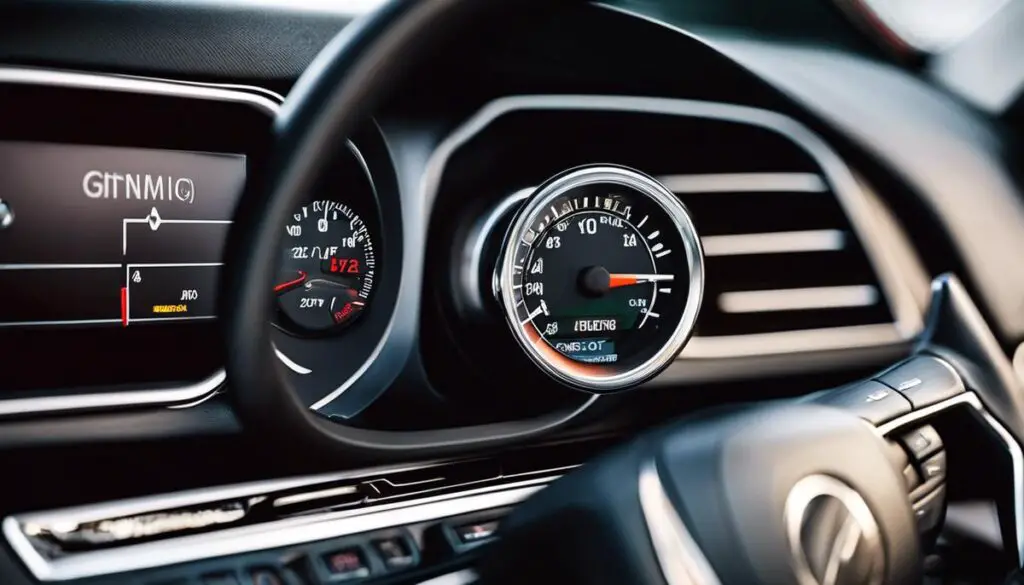In today’s digitally advanced automotive world, the term ‘Shift to Park’ has become increasingly familiar to car owners. This automated message functions as a vital sign to drivers, keeping them aware of potential issues with the vehicle’s gear shift. Acting as a communication line between the car’s internal system and the driver, it plays a vital role in maintaining vehicular safety. Understanding this warning, its triggers, and implications form a crucial part of being an informed and responsible vehicle owner. Moreover, as we step deeper into this world of automated messages, knowing how to diagnose and fix common issues associated with it can be immensely beneficial.
Understanding the ‘Shift to Park’ Message
Decoding the ‘Shift to Park’ Message in Your Vehicle: What It Means and How to Respond
As technology evolves, it significantly restructures our daily lives, including how we interact with our cars. In fact, the automotive industry may be one of the most technologically advanced industries in the world, producing vehicles seemingly laced with the latest high-tech features and nudging us perpetually into the future. And yet, in this myriad of high-tech wizardry, there are still mundane elements left that could leave even the most tech-savvy drivers puzzled – such as the ‘Shift to Park’ message.
Understanding Your Car’s Language: The ‘Shift to Park’ Message
Vehicles, especially modern ones, use a complex system of error messages to communicate potential issues. The ‘Shift to Park’ message is one such alert that appears on the dashboard. This command, in its simplest terms, is your car’s way of indicating that it believes the gear shift is not in the ‘park’ position.
In an automatic transmission car, shifting gears moves a lever in the transmission into different positions, each labeled with a specific purpose. The ‘park’ position locks the transmission, preventing the drive wheels from turning – a safety measure to keep your car stationary when you are not in it.
Reasons for a ‘Shift to Park’ Message
Several factors behind that somewhat disconcerting ‘Shift to Park’ message might pop up when you’re certain the vehicle is already in park. The main culprits are often a faulty shift lock control switch, a worn-out or damaged shifter, or a malfunction within the car’s electronics system that falsely perceives the car is not in park.
Addressing the ‘Shift to Park’ Message
Dealing with a ‘Shift to Park’ message popping out of nowhere can be troubling, but not impossible to rectify. Firstly, start by checking the shifter’s position and try to reposition it back to ‘park’. This is an intuitive yet practical step as it rectifies any loose shifting that might have occurred accidentally.
If the car persists in displaying the ‘Shift to Park’ message, there could be an electrical processing glitch causing it. A simple solution is to disconnect the battery momentarily. Doing this will reset the vehicle’s electrical system, including the ‘Shift to Park’ sensor.
In some cases, a DIY solution might not be sufficient to address the persistent ‘Shift to Park’ message. When this happens, it’s advisable to take your car to a trusted mechanic or pro-dealer to prevent potential damage. They can conduct a comprehensive diagnosis and prescribe an effective solution.
Technology in cars continues to enhance our driving experience, make our cars safer, and sometimes, admittedly, slightly befuddle us. Understanding what causes your car to display messages like the ‘Shift to Park’ error and how to deal with them can make your tech-infused driving experience a lot smoother. Just remember that with technology as with everything else, it is usually about learning how to speak its language.

Assessing the Shift to Park Issue
Technological Troubleshooting: Unraveling the ‘Shift to Park’ Conundrum
As an ever-growing field, technology is deeply imbedded in every facet of our lives. For auto enthusiasts and everyday drivers alike, understanding the nexus between technology and the automotive world is key to seamless interactions with your vehicle. Among the myriad of technology-related issues car owners may encounter, the bewildering ‘Shift to Park’ message has caught our radar!
Carrying forward from the previous discussion, we’ve already touched upon what a ‘Shift to Park’ message is, its relevance to an automatic transmission car, and the potential causes when the vehicle is already in park. Now, let’s dive into actionable solutions and methods that can shed light on the issue.
For persistent ‘Shift to Park’ messages, it’s wise to look beyond the surface. More often than not, this issue roots back to a minor hitch within the shifter assembly, specifically within the shifter switch.
- Inspect the Shifter Assembly: You’ll want to meticulously inspect the shifter assembly, focusing on the shifter lock or park switch. This switch transmits a signal to your vehicle’s computer system when the shifter is in park. If this isn’t working properly, your car won’t register that it’s in park – thus prompting the ‘Shift to Park’ message.
- Check the Electrical Connections: The ‘Shift to Park’ issue could very well be electrical. Automotive electrical issues can be subtle, yet have significant repercussions. Check for loose, corroded, or disconnected wires connected to the shifter assembly.
- Evaluating the BCM (Body Control Module): The BCM is essentially the brain controlling many of your vehicle’s features. A malfunctioning BCM could be the culprit behind the persistent ‘Shift to Park’ issue. Using an advanced diagnostic tool, an experienced mechanic can check whether the BCM is functioning correctly.
- Replacement as a Last Resort: If all the above troubleshooting tips fail to resolve the ‘Shift to Park’ issue, the problem may lie within the shifter assembly itself. In this case, replacement of the shifter assembly would be the recommended step. This is a more complicated procedure, best left to professionals.
To ensure the longevity of your vehicle and a competent resolve to technology-related issues, grasp the nuances of modern car technology. This not only amplifies your knowledge as an auto enthusiast, but can save you a significant amount of money and time spent at the mechanic.
Navigating to the root cause of the ‘Shift to Park’ message equips you with the know-how to keep your car running optimally. Crafting solutions enriched by our understanding of technology, we empower ourselves to be the master of our machines, not the other way around. Remember – technology exists to serve us, let’s use it wisely.

Resolving the Shift to Park Problem
Exploring Technology’s Role in ‘Shift to Park’ Issue Resolution
The dawning of technology has steered the automotive industry into a whole new course of innovation. It’s escalating our vehicles into the realm of unthinkable performance and efficiency. However, understanding this technology is crucial since it can sometimes present unique challenges.
Let’s probe into the technological intricacies that may shed light on ways to rectify the ‘Shift to Park’ issue further. We’re moving beyond basic troubleshooting steps such as checking the shifter’s position or resetting the electrical system.
A Vital Component: The Shifter Assembly
The Shifter assembly – a particularly valuable component in an automatic transmission car, is your first port of call in this issue. A significant element within this unit is the shifter lock or the park switch. It’s designed to ensure your vehicle maintains a ‘park’ state when the shifter is placed correctly. If there’s a glitch in this part, the ‘Shift to Park’ message may appear on your display.
Testing the Wiring Connection
Shifter assembly communicates with other vehicle systems through a network of wiring. Each wire plays a pivotal role in sending and receiving signals, so any anomalies here may contribute to the ‘Shift to Park’ issue. Look for any signs of loose, corroded, or disconnected wires.
The Potential Culprit: Body Control Module (BCM)
The BCM acts as the vital command center for various electrical components in your car. If it encounters an issue, the ‘Shift to Park’ message can illuminate, even when the vehicle resides in park mode. It would be wise to check the BCM for any diagnostic trouble codes using a scan tool. Clearing existing codes may rectify the issue.
Resorting to Replacements: The Last Measure
Sometimes, despite your best attempts, the ‘Shift to Park’ issue may persist. In such instances, replacing the shifter assembly might be your last resort. Though this is a more extensive procedure, it might be inevitable if the issue lies deeper than superficial troubleshooting can reach.
Beyond Just Problem-Solving: Understanding Your Car
While troubleshooting car problems could be time-consuming, there’s an undeniable gratification in being competent and self-reliant. With automotive technology advancing at breakneck speed, it’s increasingly crucial to harness the understanding and skills to handle these tech-based hurdles. Individual knowledge empowers you to navigate technology-related issues in vehicles, contributing to a smoother, more efficient driving experience.
Ultimately, the ‘Shift to Park’ frustration is not an insurmountable hurdle if we understand the potential issues, and know where to look. After all, the beauty of technology in cars isn’t just about the smooth ride, it’s equally about the journey of learning it presents.

By equipping ourselves with the knowledge of identifying gear shift issues and understanding the significance of the ‘Shift to Park’ message, we do not just become more competent as vehicle owners, but we also enhance the longevity of our vehicles. Being alert and responding timely to such warnings can prevent minor problems from morphing into major repairs. Whether it’s a simple DIY fix or a situation requiring professional intervention, our quick actions can ensure timely resolution, saving us time, money, and distress. As vehicle technologies advance, so should our knowledge and adaptability, keeping us always in the driver’s seat.

Tomas is a retired Chevy Auto Technician that brings decades of hands-on experience and expertise to the table. He’s also a father to two incredible daughters. He enjoys using his knowledge and experience to help you solve and find reliable information on Chevrolet vehicles. Whether it’s troubleshooting engine problems or providing tips for maintenance, Thomas is committed to helping Chevy owners keep their vehicles running smoothly and safely.




